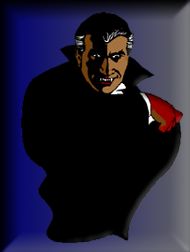

PART 1: Diagramming (10 points)
Instructions: Using the numbering scheme provided, construct a diagram of the arguments in the passage below.
1Dracula must be a bat because 2he is a vampire and 3all vampires are bats. Moreover, 4he must be hungry because 5he has not eaten in three days, and 6anyone who has not eaten in three days is hungry. 7If Dracula is a hungry bat, the tourists will wake up drained in the morning if they stay the night. 8The tourists are idiots because 9they are staying the night. So 10they are going to wake up drained in the morning. Unfortunately, 11anyone who wakes up drained in the morning will stay forever.
PART 2: Translation (15 points)
Instructions: Construct a translation key and translate the argument below into symbolic notation.
Dracula ate well only if the tourists visited the castle and stayed the night. However, the tourists visited the castle and stayed the night if and only if they were either idiots or their car broke down. Therefore, since the tourists were not idiots, Dracula did not eat well unless their car broke down.
PART 3: Truth Table (15 points)
Instructions: Determine whether the statement below is logically true, logically false, or logically indeterminate by constructing a truth table.
((P > (Q . R)) = (( - Q v - R) = - P))
PART 4: Consistency Tree (15 points)
Instructions: Determine whether the set of statements below is consistent or inconsistent by constructing a consistency tree.
{ (P v (Q . R)); (Q = - R) ; (P > (P v (Q > R))) }
PART 5: Proof (15 points)
Instructions: Construct a proof of the following argument.
{ (P > - (S v R)); (Q v (R . T)); ( - L . P) } / (Q v M)
PART 6: Syllogism (15 points)
Instructions: Identify the mood and figure of the argument below. Explain whether the argument is valid or invalid on both the Classical Theory and on the Modern Theory. If it is invalid on either of the theories, identify the rule (or rules) it violates.
Since no counts are bats and all vampires are bats, some counts are not vampires.
PART 7: Venn Diagram (15 points)
Instructions: Construct two Venn diagrams on the argument in Part 6, one from the modern perspective, the other from the classical perspective. Label the two diagrams Modern and Classical , and identify the three rectangles in each diagram.